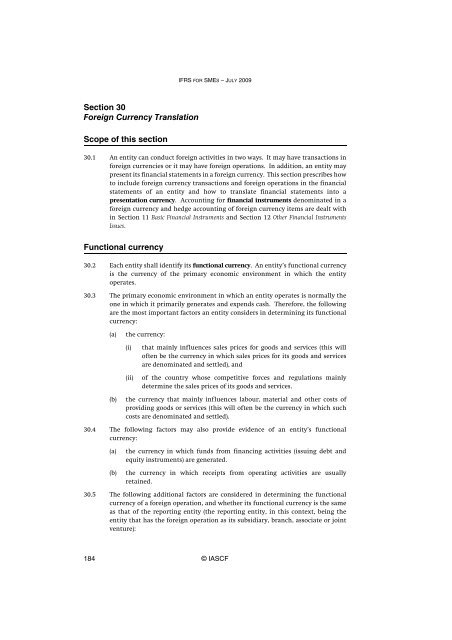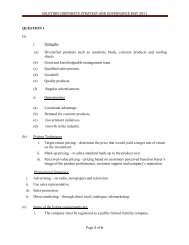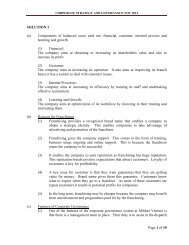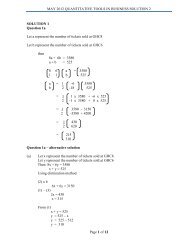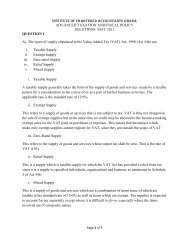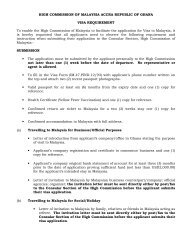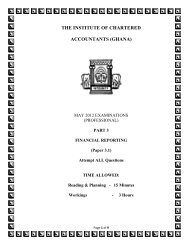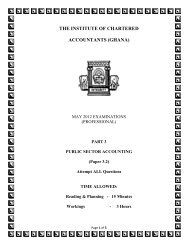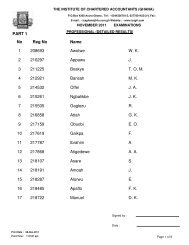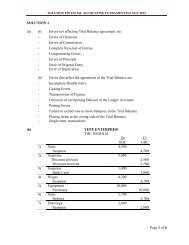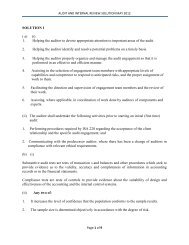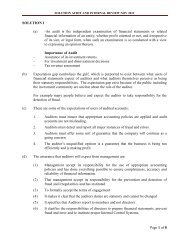(IFRS) for Small and Medium-sized Entities (SMEs)
(IFRS) for Small and Medium-sized Entities (SMEs)
(IFRS) for Small and Medium-sized Entities (SMEs)
You also want an ePaper? Increase the reach of your titles
YUMPU automatically turns print PDFs into web optimized ePapers that Google loves.
<strong>IFRS</strong> FOR SMES – JULY 2009Section 30Foreign Currency TranslationScope of this section30.1 An entity can conduct <strong>for</strong>eign activities in two ways. It may have transactions in<strong>for</strong>eign currencies or it may have <strong>for</strong>eign operations. In addition, an entity maypresent its financial statements in a <strong>for</strong>eign currency. This section prescribes howto include <strong>for</strong>eign currency transactions <strong>and</strong> <strong>for</strong>eign operations in the financialstatements of an entity <strong>and</strong> how to translate financial statements into apresentation currency. Accounting <strong>for</strong> financial instruments denominated in a<strong>for</strong>eign currency <strong>and</strong> hedge accounting of <strong>for</strong>eign currency items are dealt within Section 11 Basic Financial Instruments <strong>and</strong> Section 12 Other Financial InstrumentsIssues.Functional currency30.2 Each entity shall identify its functional currency. An entity’s functional currencyis the currency of the primary economic environment in which the entityoperates.30.3 The primary economic environment in which an entity operates is normally theone in which it primarily generates <strong>and</strong> expends cash. There<strong>for</strong>e, the followingare the most important factors an entity considers in determining its functionalcurrency:(a)the currency:(i)(ii)that mainly influences sales prices <strong>for</strong> goods <strong>and</strong> services (this willoften be the currency in which sales prices <strong>for</strong> its goods <strong>and</strong> servicesare denominated <strong>and</strong> settled), <strong>and</strong>of the country whose competitive <strong>for</strong>ces <strong>and</strong> regulations mainlydetermine the sales prices of its goods <strong>and</strong> services.(b)the currency that mainly influences labour, material <strong>and</strong> other costs ofproviding goods or services (this will often be the currency in which suchcosts are denominated <strong>and</strong> settled).30.4 The following factors may also provide evidence of an entity’s functionalcurrency:(a)(b)the currency in which funds from financing activities (issuing debt <strong>and</strong>equity instruments) are generated.the currency in which receipts from operating activities are usuallyretained.30.5 The following additional factors are considered in determining the functionalcurrency of a <strong>for</strong>eign operation, <strong>and</strong> whether its functional currency is the sameas that of the reporting entity (the reporting entity, in this context, being theentity that has the <strong>for</strong>eign operation as its subsidiary, branch, associate or jointventure):184 © IASCF


